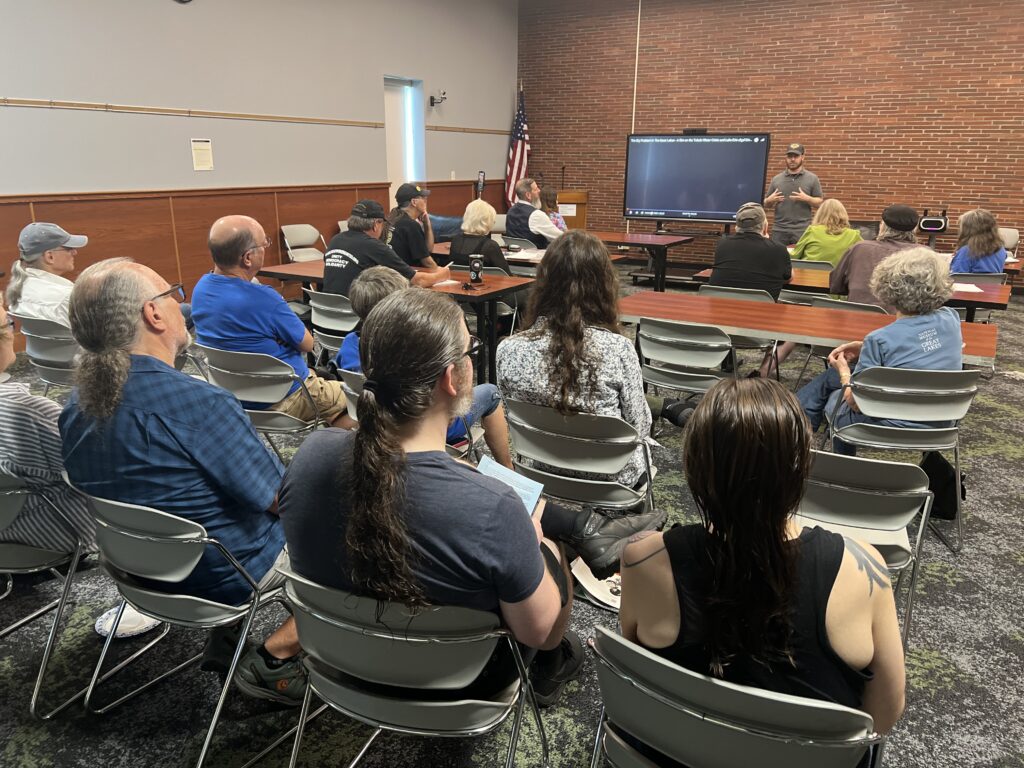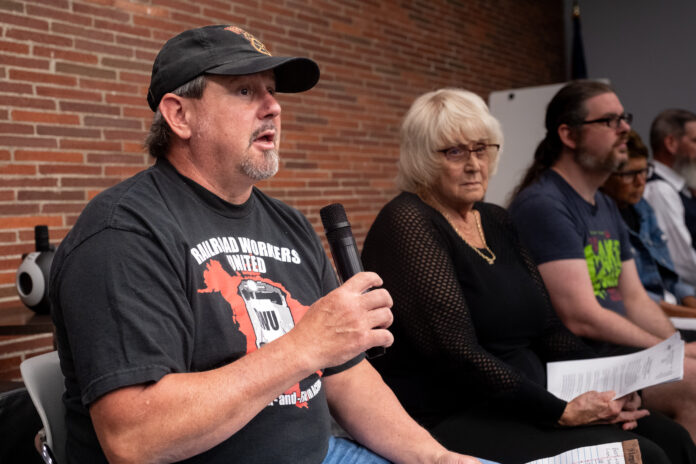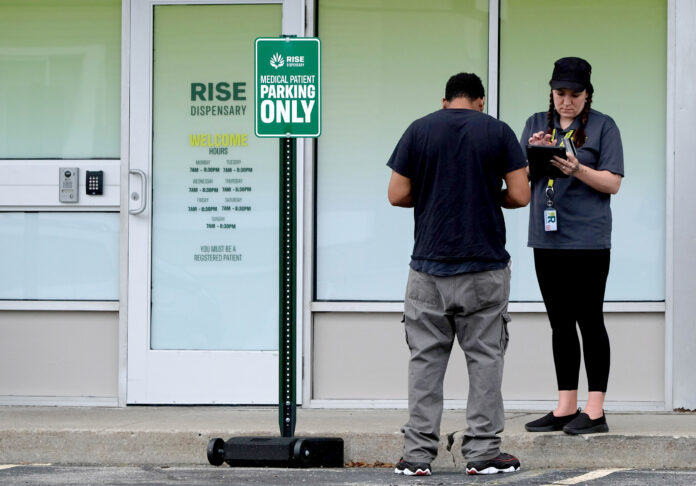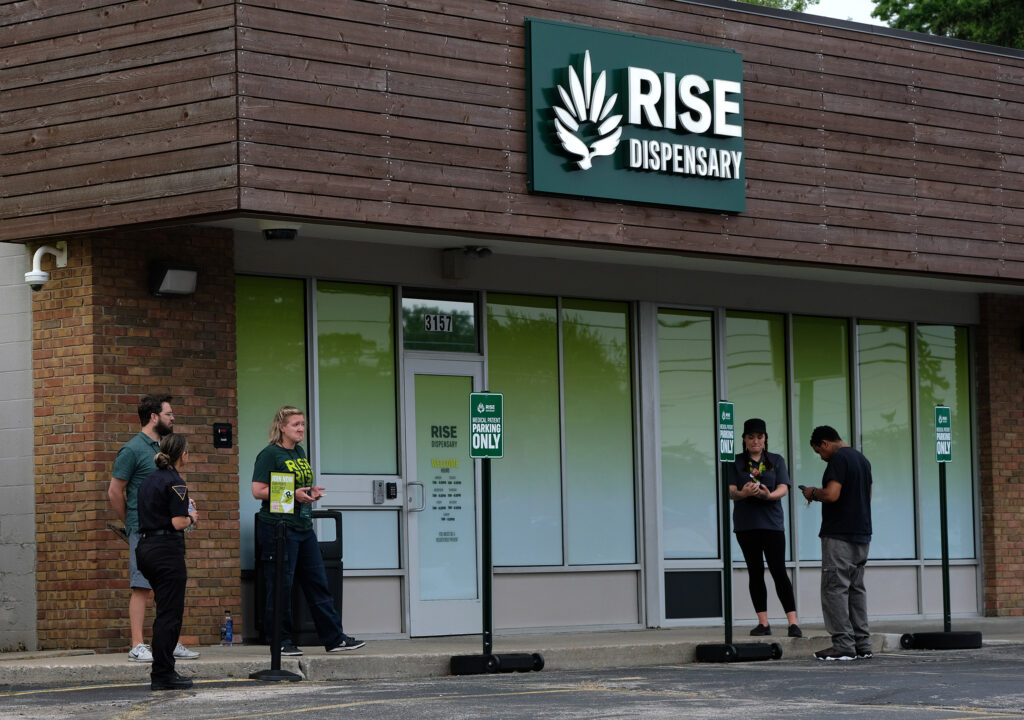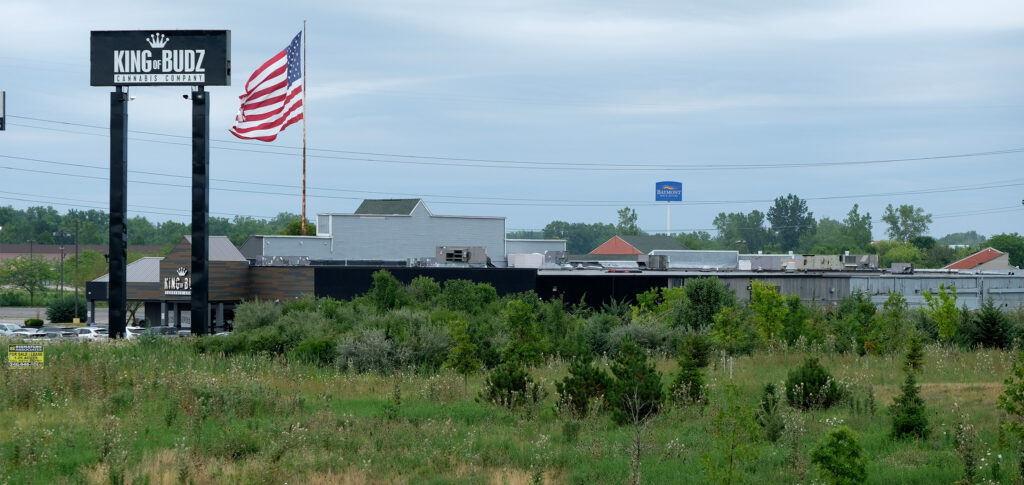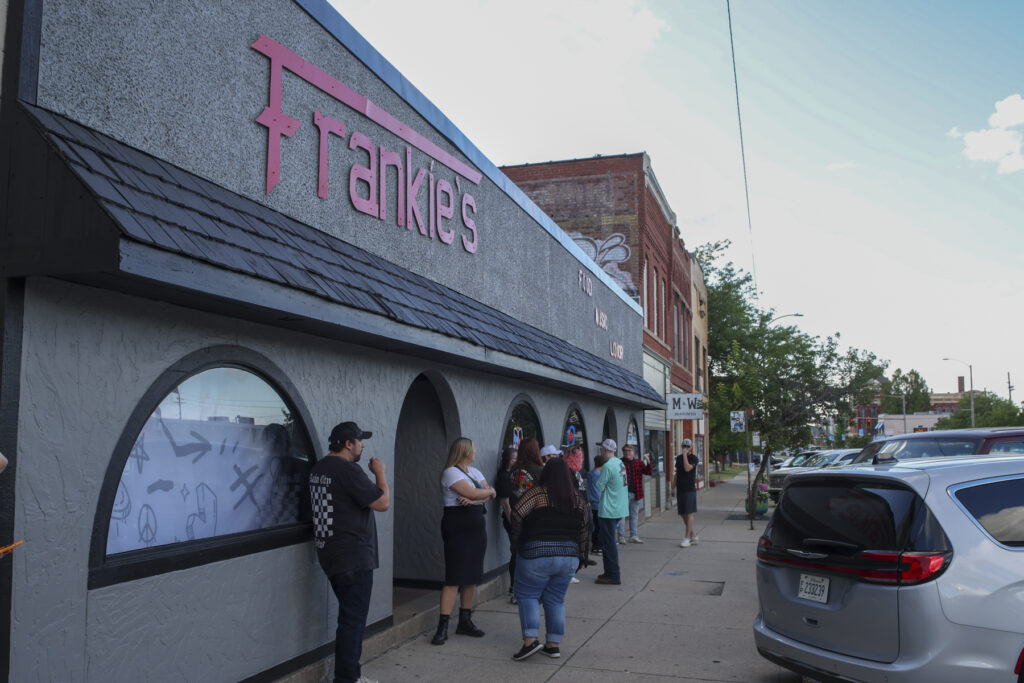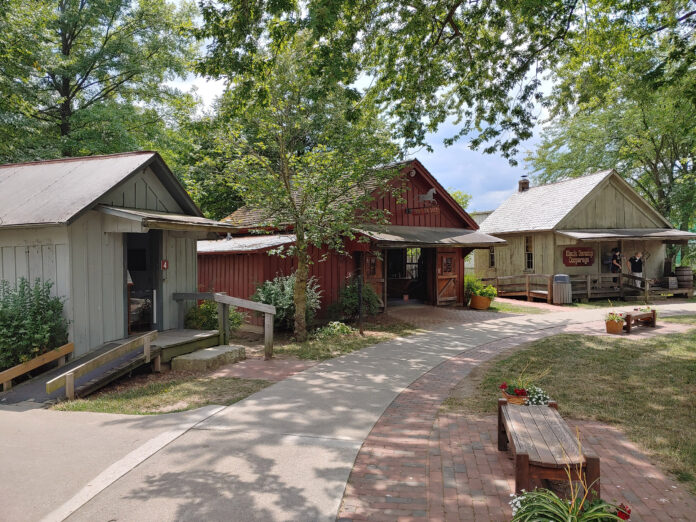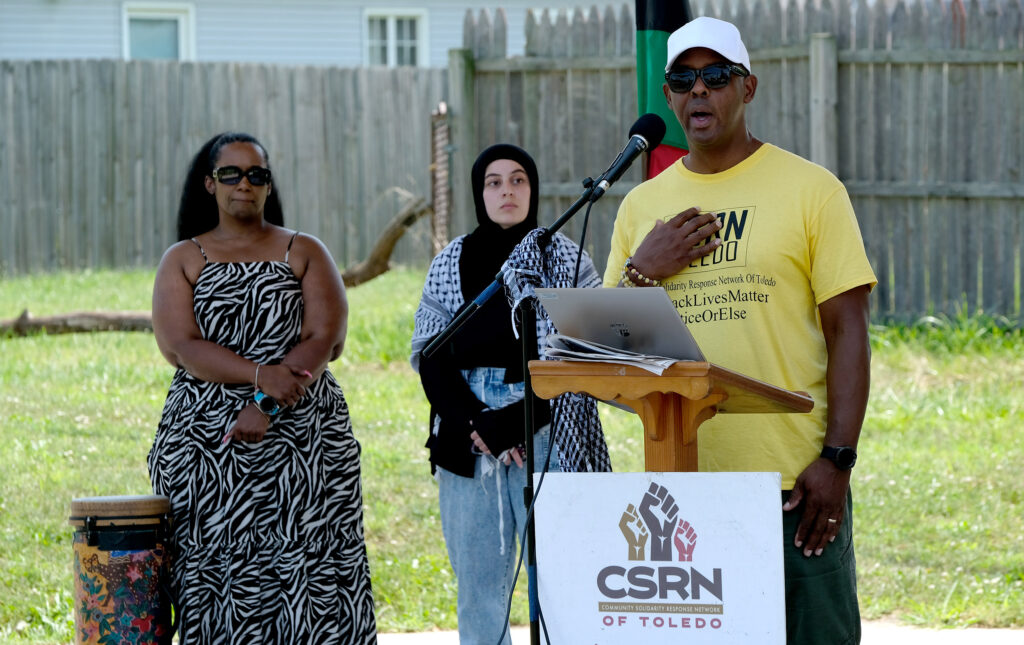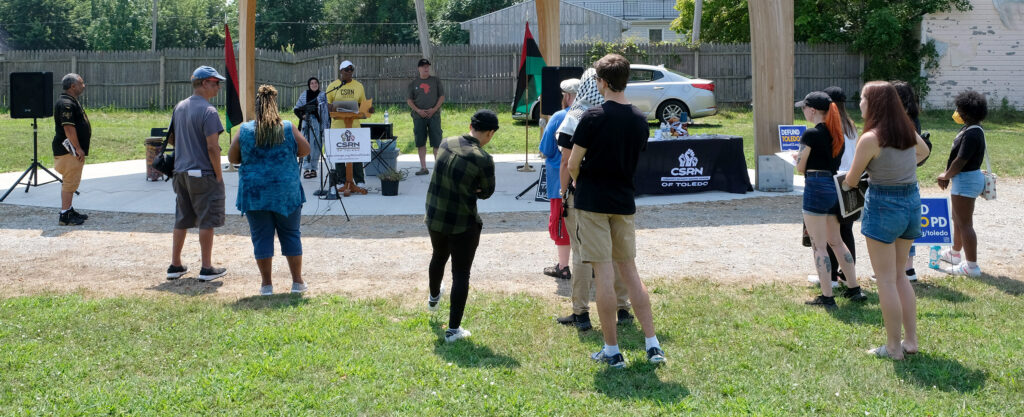Conference on Corporate Caused Disasters targets unsafe water, train derailment
TOLEDO – It’s an anniversary few Toledoans will ever forget.
August 2, 2014: The day Toledoans woke up to warnings not to drink, bathe or cook with municipal drinking water. It was the day Toledoans came to understand just how devastating blue-green algal blooms in Lake Erie could be when toxic cyanobacteria contaminated the water supply for 400,000 human beings.
The algal bloom and undrinkable city water made national news—and not in a good way, either.
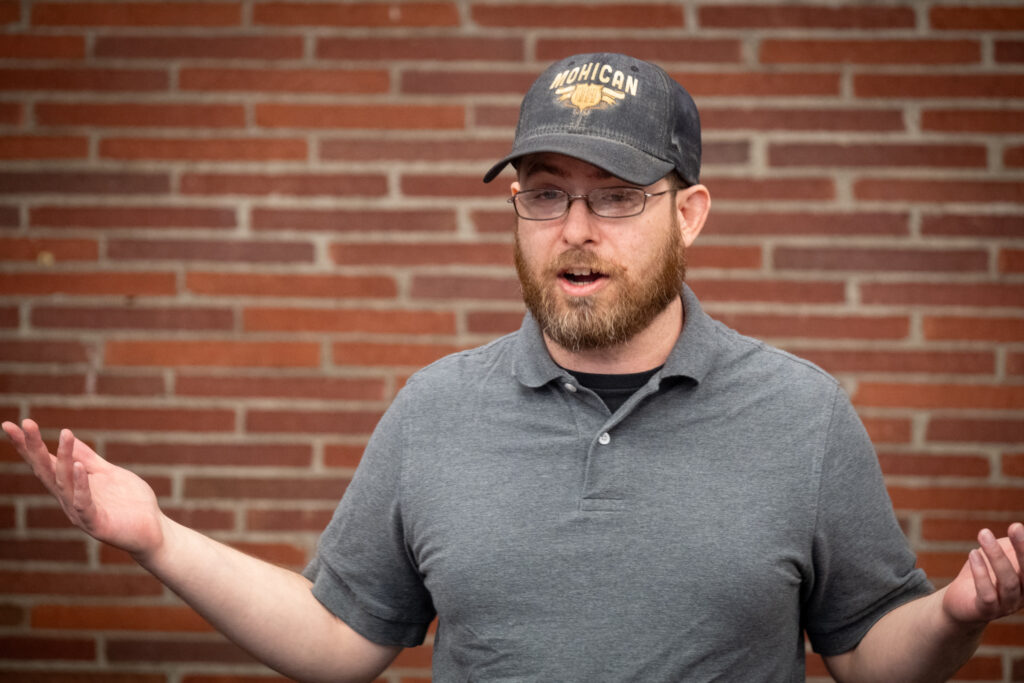
Ten years after the three-day water crisis, Mike Balonek, a Toledo filmmaker, crafted a short documentary about the challenges of blue-green algal blooms that still face the region. His film, The Big Problem in the Great Lakes, which premiered Aug. 3 at the Kent Branch Library, was part of the Conference on Corporate Caused Disasters, which he helped organize.
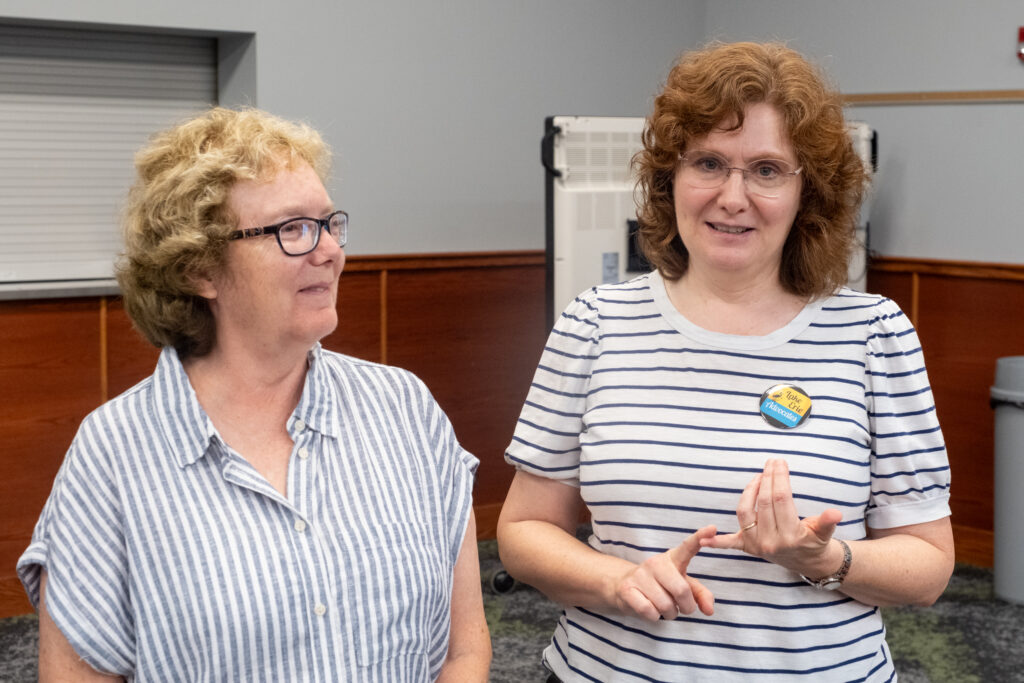

Balonek claimed he was never an organizer, but a filmmaker. The train derailment and burning of toxic chemicals in East Palestine, Ohio, last year motivated him to bring people from many different backgrounds together to discuss what they have in common.
“Everyone felt that now is a good time to start a movement, a movement where everyday people work together to protect themselves from the environmental harms that their local, state, or federal government won’t,” he said.
“If you live here (Toledo), you live in a sacrifice zone,” said Balonek. A sacrifice zone is defined as any area where you and your family’s health and safety are being sacrificed for corporate profits.
The documentary shows that there is little actual enforcement of environmental regulations when it comes to factory farms or Concentrated Animal Feed Operations (CAFOs). These factory farms, with thousands of beef cattle, dairy cows, pigs and chickens contained in relatively small areas, produce huge amounts of manure used as fertilizer on fields, causing massive run-offs of excess manure into local streams and rivers. Eventually all the phosphorus and nitrogen winds up in Lake Erie where an overabundance of these nutrients can cause large blue-green algal blooms.
There is little interest coming from the federal government about how these algal blooms can poison the drinking water for upwards of 11 million people living along the shores of Lake Erie in both the U.S. and Canada. Their attitude is that the people of the Great Lakes can take care of themselves.
Toledo mayor Wade Kapszukiewicz, interviewed in the documentary about the 2014 water crisis, said, “A single CAFO shouldn’t be approved going forward, but they’ve approved 50 new ones since then. The state continues to look the other way. The state uses Lake Erie as a toilet.”
There’s a lack of enforcement.
Sandusky County farmer Tony Ruffing
And with farmland selling for approximately $10,000 an acre in NW Ohio, according to Ruffing, more and more corporations/billionaires are buying it up. Small farmers who practice environmentally friendly farming cannot hope to compete unless laws and regulations are changed in their favor.
After the film showing, a panel of activists from Lake Erie Advocates (LEA), Toledoans for Safe Water, East Palestine and Piketon, Ohio, and San Francisco (via Zoom) gave testimony about the corporations that have caused environmental disasters in their areas, and how the people are fighting hard for recompensation and needed remediation of the toxins in their air, land and water. This includes the many decades-long fight for the removal of radioactive nuclear wastes left over from government projects in Piketon, Ohio and San Francisco.
It’s an uphill battle.
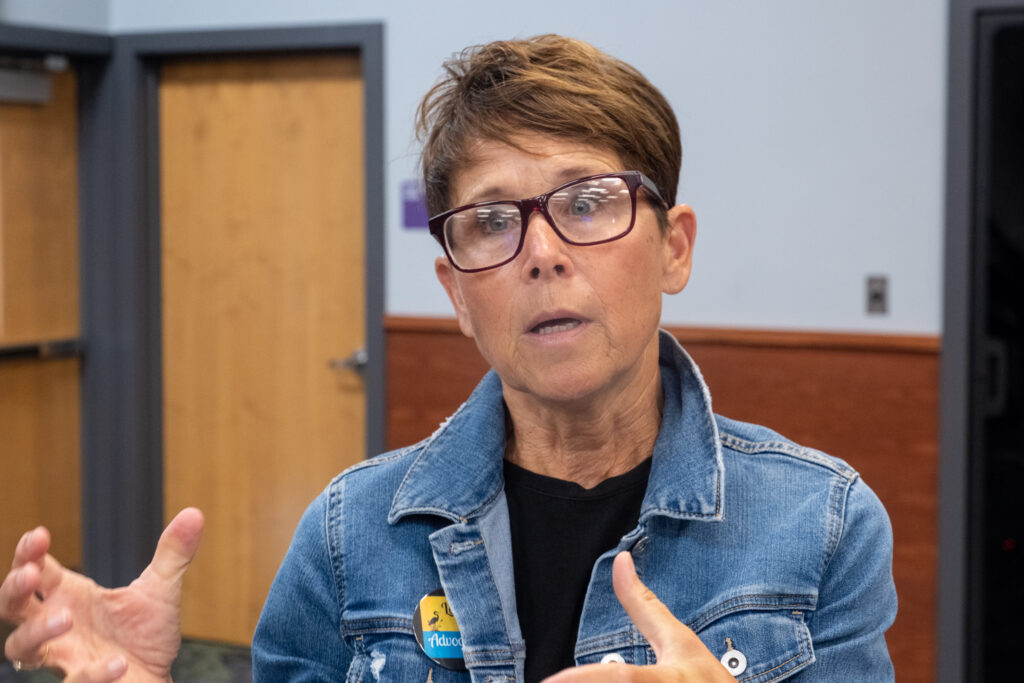

“CAFOs are not a sustainable industry,” LEA activist Kim Axe noted. The federal and state governments subsidize them to produce excess products such as milk, that sometimes later cannot be sold. The state of Ohio even pays farmers $60 an acre to spread the plentiful CAFO manure onto fields, but it doesn’t monitor how much is being used, leading to the excessive nutrient run-offs into the lake which causes the toxic algal blooms.
Most of the activists stressed how corporations and their lobbyists have tremendous influence over politicians and government agencies. Regulatory capture is real.
The Environmental Protection Agency (EPA) provides permits to corporations stating how much pollution they are allowed to dump into the environment and doesn’t always monitor what’s happening. The panelists felt that governments at all levels are abdicating protecting the public’s health and safety.
But there is unity in the community. Ohioans can come together and fight back against this corrupt system.
“Why is clean, safe drinking water controversial?” asked Toledo activist Sean Nestor. “Who could be opposed to clean water?”
“The voice of the people is muffled by the corporations,” added Matt Weaver, a Railroad Workers Union member who noted a pattern. “Regulations interfere with profits, the quest for shareholder happiness. You can’t trust an industry to self-regulate.”
Each of the panelists gave examples of how corporate farmers, railroad corporations and the nuclear industry have failed to self-regulate, and offered suggestions on what the public can do about it.
“Let the people know what’s happening,” said Chris Albright, a resident of East Palestine. Albright has suffered serious health issues caused by the toxins released into the air from the unnecessary burning of chemicals leaked from train cars after the derailment in February 2023.
The Stafford Act — a federal act that could designate East Palestine a disaster zone and give residents much needed health care and compensation for their homes lost to the pollutants— has yet to be signed by President Biden. Albright lost his job due to his health issues, as well as his good private health insurance. He worries about his children’s health.
It’s going to keep happening. It’s not if but when. They contaminated our town for profit … and our government doesn’t want to pay.
Chris Albright
The government hasn’t provided Stafford Act health care and compensation to the people of Toledo or Piketon, either. But Ohioans are working together to find out what risks there are to our health caused by blue-green algal blooms.
The University of Toledo, along with the Great Lakes Center for Fresh Waters and Human Health, are conducting a study into the effects of cyanobacteria aerosols that people who live, work or recreate near or on Lake Erie in Lucas, Sandusky, or Ottawa counties might have experienced. The film noted that aerosols have proven to be an even greater risk to the public’s health than simply ingesting water or sand that has become contaminated with blue-green algae.
The “GLAMR Study” (Great Lakes Aerosol Monitoring Research Study) needs participants. Call 419-383-6761 or email jennifer.gilmore@utoledo.edu for more information.
Full Disclosure: Sean Nestor is a board member of the Toledo Free Press.
